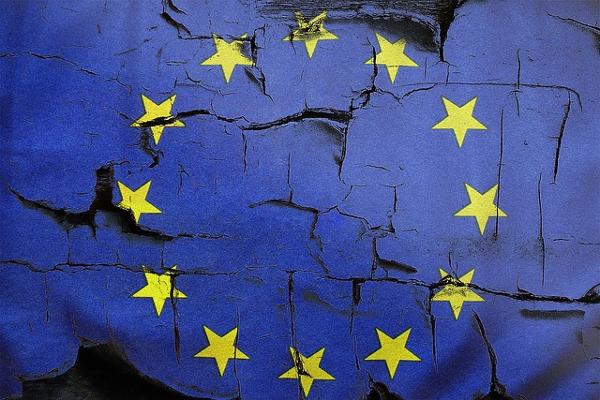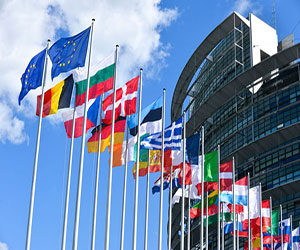The initial intention behind NextGenerationEU was to respond to the pandemic through borrowing, on the financial markets, hundreds of billions of Euros in order to provide a mixture of grants and loans to the Member States to support their own recovery from the effects of Covid-19. A laudable aim. There is much which is remarkable about NextGenerationEU as the EU’s chosen method of response. The first is its size, initially 750 billion EURO in 2018 prices, it is now valued at over 800 billion Euros and has the potential to increase, through interest rates and market fluctuations, to over a Trillion Euros by the repayment deadline, which is stipulated in the Own Resources Decision 2020/2053 as being 31 December 2058. The second is that this money is borrowed on the financial markets, an extraordinary route via which to raise funds for a non-federal bloc of States, it is certainly an interesting step for the concept of sovereignty, as written previously on this blog (Caravita), “starting to build a piece of European sovereignty in the monetary sector, with individual states having ⎼ to use the words of the Italian Constitution ⎼ allowed, «on equal terms, to the limitations of sovereignty necessary for an order that ensures peace and justice among nations»”. Third, there is the interesting legal construction and novel interpretation applied to the Treaties – especially Article 311 TFEU and Article 122 TFEU – to enable the borrowing to occur and, four, the fact that NextGenerationEU is affixed to the Union budget through its novel legal construction means that both the disbursement of the funds occurs through the budget as does repayment, the budget is the channel, or conduit for both in relation to NextGenerationEU. This is to name but a few of the extraordinary features of NextGenerationEU and is definitely not an exhaustive list. I have written elsewhere about the details of the legal construction of NextGenerationEU, including the Own Resources Decision and the Interinstitutional Agreement, as well as the likelihood of repayment on the basis of the EU’s current proposals for new own resources, including taxation, to avoid the default repayment setting. Suffice it for present purposes to consider two pertinent points about whom may be liable to repay, and indeed if the EU has not constructed, in trying to respond to one crisis, a crisis of credibility of its own making.
As to whom may be liable to repay, Article 9 of the Own Resources Decision 2020/2053 contains the default position, which is that it is the Member States which will be liable to repay all of the NextGenerationEU debt – including the grants - if sufficient new own resources are not otherwise forthcoming. There is a fundamental question as to whether new own resources financially sufficient to repay the debt will be forthcoming before the deadline. What is interesting is not just that the legal construction has provided for the default situation whereby the debt is to be repaid by the Member States, but that the repayment obligation is not allocated on the basis of the extent of receipt of NextGenerationEU funds. The reference point, as Article 9 (4) and (5) of the Own Resources Decision 2020/2053 makes clear, is the usual obligation to contribute to the budget on the basis of GNI. It is therefore quite conceivable that the Member States which have received a large proportion of the NextGenerationEU monies, but do not necessarily pay the most into the EU’s Budget because they do not have the highest GNI, will have their repayment liability ultimately underwritten by Member States which do. For example, Italy is a significant recipient of NextGenerationEU monies, but as it is not necessarily the main Member State contributor to the Budget on the basis of its Gross National Income, it may transpire that it has a lesser liability for repayment. In short, the whom in the example of Italy, may not actually be Italy.
As to if the EU has not constructed itself, in responding to one crisis, a crisis of credibility of its own making, there is a significant question surrounding whether the EU can introduce new own resources to repay the NextGenerationEU debt in order to avoid recourse to the default repayment provisions. This is because the new own resources proposed to repay the debt relate to the EU’s green targets and corporate and financial taxation, which are both intrinsically problematic, but are also linked to EU objectives contradictory to raising revenue for repayment. The two proposed environmental new own resources are an amended Emissions Trading Scheme (ETS) and the Carbon Border Adjustment Mechanism (CBAM), both of which are linked to Green Deal targets of carbon neutrality. The rationale behind both the ETS and CBAM is effectively to disincentivise carbon usage through taxation. Consequently, in terms of raising sufficient revenue to repay the debt, if the EU is able to meet its targets, they should both be ever diminishing resources. The broad corporate and financial taxation proposals for new own resources are stalling and are very difficult to introduce without recourse to differentiated integration, and even then, there will need to be compromises which will impact on the timing of their introduction and their potential to raise sufficient revenue to repay the debt. The pertinence to NextGenerationEU spending, the Recovery and Resiliance Facility (RRF), is that how the money is used, spent and allocated under the RRF is likely to impact on the ability to raise money to repay. This is because there is a concentration by Member States on using NextGenerationEU money to decarbonise. To take one example, Italy wants to produce hydrogen using renewables for rail transport. However, this is one of the ETS areas which may bring in the most revenue to repay the debt but only if such decarbonisation attempts are unsuccessful. In essence, new own resources to repay the debt are being linked to repayment objectives which oppose the objectives on the basis of which funding is released. Furthermore, the Financial Times recently reported on a leaked draft document from the Commission which details the intention to mirror the US Inflation Reduction Act (Leoncini on this blog) by providing tax credits as a speedy form of corporate subsidy by loosening state aid rules to allow for a similar scheme potentially funded by NextGenerationEU monies. If introduced, this will have the possible impact of reducing the corporate tax receipts expected from the corporate tax new own resources proposals allocated, in part, to repay NextGenerationEU. Therefore, the contradiction of objectives may serve only to produce a failure to meet each and consequently, by design, the EU has created, in response to the pandemic crisis, a potential crisis of credibility relating to future funding and ability to meet its own policy objectives. The message, at least for some Member States, is “be careful how you spend the money”.
Per rimanere aggiornato sulle novità di EUblog iscriviti alla Newsletter!






















